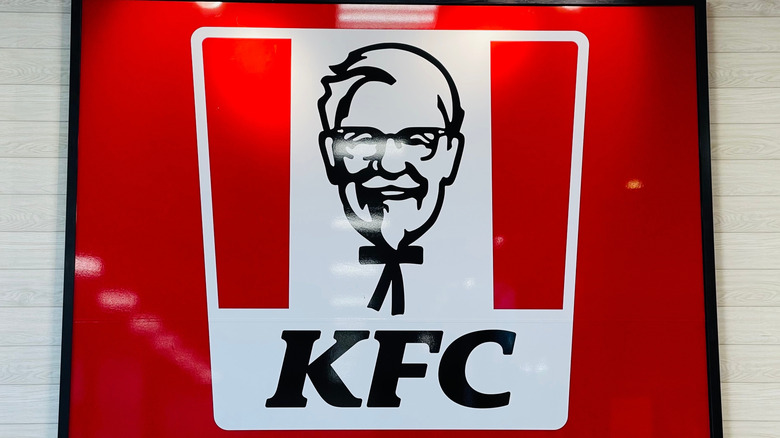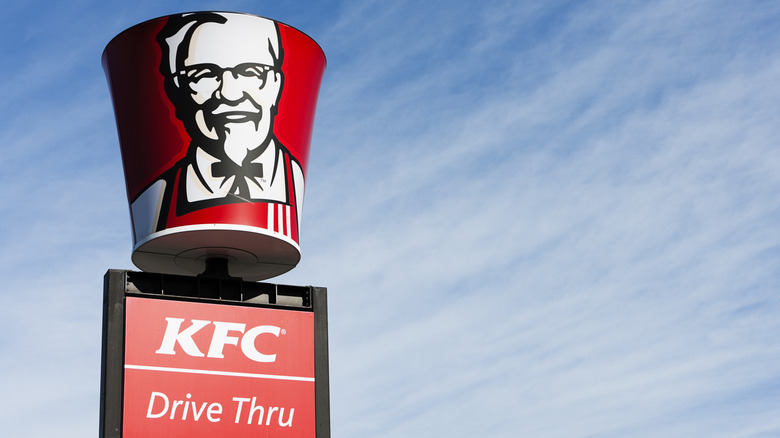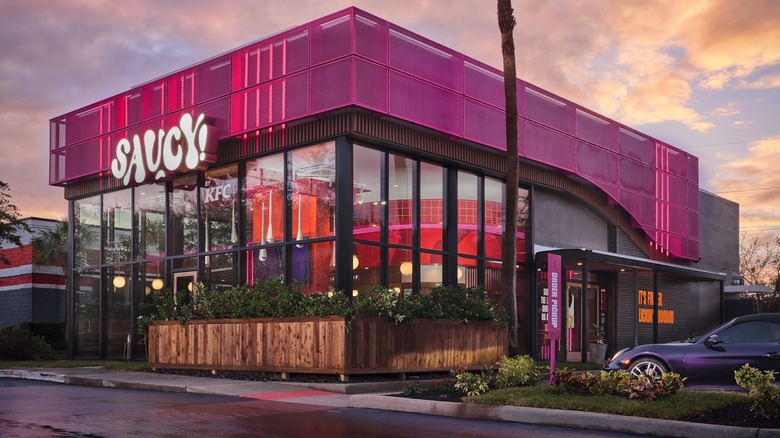KFC Is Struggling To Keep Restaurants Open And The Reason Couldn't Be Clearer
Not every chicken dinner can be a winner winner situation. The chicken chain formerly known as Kentucky Fried Chicken has struggled in recent years. Despite a generally strong global market presence, KFC has suffered not-insignificant domestic decline post-pandemic. Plus, KFC's declining U.S. sales are coming hot on the heels of major location closures as both domestic and international franchisees have dealt with bankruptcies.
It may be initially surprising to see a legacy brand like KFC struggling, especially in the midst of other popular fried chicken chains are expanding in 2025. However, KFC leadership did admit in a Q1 2024 earnings call that the value offered to wallet-weary customers through competitor promotions has had a hand in deep-frying KFC, at least for now.
In 2025, KFC's parent company, Yum! Brands, shifted the corporate leadership lineup at the top of KFC's C-suite in an apparent attempt to spice up the tired fried chicken brand. The company also announced plans to uproot KFC's headquarters in Louisville, Kentucky to a tax-friendlier Texas location: Plano, where other Yum! Brands corporate work is based. While offering up additional value items may be the real ticket to reviving the chicken chain's flagging success, KFC is also keenly focused on AI-based personalized marketing initiatives, stunt product promotions, and new restaurant concepts.
Too-little value for trying times
Consumer spending is down as already-stagnant wages suffer under the strain of factors causing inflation – not to mention the looming prospect of how new tariffs will impact family budgets. If the average American consumer is tempted to stock up on canned goods before they're hit with tariffs at the same time restaurants are adding egg surcharges to compensate for skyrocketing prices, things don't look great for fast food chains charging a fortune.
With that said, buying tasty, filling, and cheap chicken dinners makes financial sense in trying economic times. It's why 2025 sales are up at chicken chains with value options like Raising Cane's and Dave's Hot Chicken. As late as April 2024, KFC introduced an under-$5 value menu in order to compete with similar offerings offered by competitors. Before the introduction of this value menu, KFC would occasionally offer smaller promotional meal deals at lower cost to their customers. However, KFC is largely associated with a bucket of fried chicken for a reason: the restaurant used to be known for more family-style dining with larger portions. While a bucket of bone-in chicken might make for a relatively inexpensive family meal, the lack of smaller price tag offerings with bigger value has eaten away at KFC's success for years.
Closures, controversy, and a potential comeback concept
In addition to issues with value, the KFC brand has also dealt with bad press lately. For starters, the company took flak for uprooting from it's original headquarters in Kentucky. However, while that corporate move affected roughly 100 employees and their families, the sudden closure of around 25 KFC restaurants across the Midwest in August 2024 likely affected more. The closures were motivated by a major Midwestern franchisee's bankruptcy declaration, and led to restructuring and layoffs from KFC's largest domestic franchisee. Yum! Brands also severed ties with a major international franchisee in 2025, IS Gida, for failing to meet franchise standards. IS Gida subsequently declared bankruptcy.
However, KFC's plans to repair these franchise mistakes seems to lean more heavily on technologically-assisted marketing and new restaurant concepts rather than a overhaul of operations or quality control. Yum! Brands' chief digital and technology officer, Joe Park, told the Wall Street Journal that AI and ordering kiosks would help the brand target and personalize promotions per person and location — allowing for moment-to-moment marketing. Meanwhile, in 2024, KFC opened a new restaurant concept in Orlando, Florida called Saucy!. The KFC spin-off restaurant focuses on value items like chicken tenders, rather than bone-in chicken. More locations are planned, but whether their doors will ever open remains to be seen.


